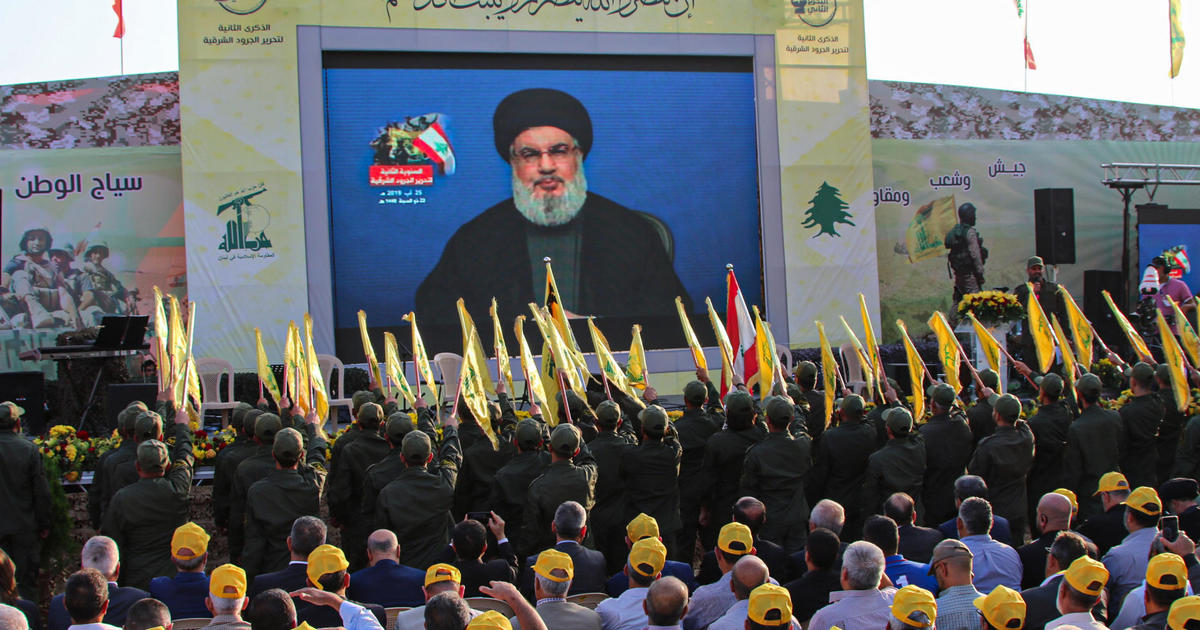Hezbollah leader Hassan Nasrallah, a figure synonymous with the militant group for over three decades, was killed in an Israeli airstrike. The strike, targeting the Iran-backed group’s “central headquarters” in Beirut, Lebanon on Friday, also claimed the life of Ali Karki, Hezbollah’s southern front commander, and several other prominent leaders.
A Legacy of Violence and Power
Nasrallah’s death marks the end of an era of militant leadership. His legacy is deeply intertwined with violence and unwavering defiance towards Israel and the West. From his rise to power in 1992 after the assassination of his predecessor, Abbas al-Musawi, to his final days, he remained a potent symbol of resistance.
Shaping Hezbollah into a Powerhouse
Nasrallah, born in 1960 into a poor Shiite family, joined the Amal Movement, which later evolved into Hezbollah, meaning “Party of God.” He studied in Iran, a crucial sponsor and ally of Hezbollah, and returned to the group, eventually assuming the position of secretary general.
Under Nasrallah’s leadership, Hezbollah transformed from a small militia to a formidable paramilitary force with a formidable arsenal and significant influence in Lebanese politics. His charismatic persona and shrewd strategies cemented his reputation as a master strategist, not only within the organization but also among regional allies, including Hamas and Iran.
Terror and War Crimes
Hezbollah’s reputation, however, extends beyond military prowess. The group has a long and dark history of terrorism, including its alleged involvement in the bombings of two U.S. embassies in the 1980s, which killed over 80 people and injured hundreds. Its involvement in airplane hijackings, kidnappings, suicide bombings, and espionage has garnered international condemnation, and its designation as a terrorist group by the U.S. government reflects the gravity of its actions.
Despite its brutal tactics, Nasrallah skillfully managed to present Hezbollah as a symbol of resistance against Israeli occupation and Western intervention. He portrayed the group as a protector of Lebanese interests, especially among the Shia community.
From Defiance to Despair
Nasrallah’s fiery rhetoric often mirrored the organization’s uncompromising stance against Israel. His speeches, delivered via video from secret locations due to security concerns, were broadcast across the region, cementing his status as a regional icon. He remained defiant even in his final televised appearance, on September 19th, blaming Israel for a devastating attack that claimed the lives of numerous Hezbollah soldiers.
The assassination of Nasrallah throws the region into uncertainty. The vacuum of leadership within Hezbollah poses significant challenges for the group’s future direction. While the organization has long established a complex and deeply rooted network of political, social, and military structures, the loss of such a powerful figure will inevitably create instability and division.
The Global Impact of Nasrallah’s Legacy
The death of Nasrallah, while a significant event, is merely a piece in a larger puzzle. The geopolitical complexities of the region, intricately woven with rivalries, alliances, and ideological clashes, continue to influence the Middle East’s landscape. Nasrallah’s absence will be felt not only in Lebanon but across the wider region, impacting various actors and interests.
The ongoing conflict between Israel and Hamas, fuelled by deep-seated tensions, remains a major flashpoint. The complex relationship between Iran and the West, fraught with geopolitical struggles and proxy wars, also hinges on regional power dynamics.
Shifting Alignments
While Hezbollah is closely aligned with Iran, it has played a pivotal role in Syria’s civil war, siding with Bashar al-Assad against a multitude of rebel groups. Nasrallah’s death may trigger shifts in alliances, potentially influencing the trajectory of the Syrian conflict.
Furthermore, his legacy is deeply intertwined with the socio-political landscape of Lebanon. The Shiite community, a significant constituency in Lebanese society, faces uncertainty following his death, leaving his successor to navigate the challenges of maintaining unity within the group and consolidating its position within Lebanese politics.
A New Chapter of Uncertainty
The death of Hassan Nasrallah marks a defining moment in the Middle East. The legacy of this enigmatic and controversial figure will be debated for years to come. Whether his successor can effectively navigate the complex landscape of regional conflicts and political realities remains to be seen.
His absence creates a void within the power structure of the region, fueling uncertainty about the future of Hezbollah and its relationship with Israel, Iran, and regional allies. The ramifications of his death are sure to be felt for years to come.
Take Away Points
- Hassan Nasrallah, Hezbollah leader for over 30 years, has been killed in an Israeli airstrike.
- The death marks the end of an era of violent and defiant leadership for the group.
- Nasrallah’s legacy is characterized by terrorism and war crimes, including involvement in the bombing of US embassies and airplane hijackings.
- His charismatic leadership and strategic acumen propelled Hezbollah into a major paramilitary force with significant influence in Lebanese politics.
- While Nasrallah is gone, Hezbollah’s network and structures remain in place.
- His absence will undoubtedly impact the group’s future and the volatile Middle East landscape.




